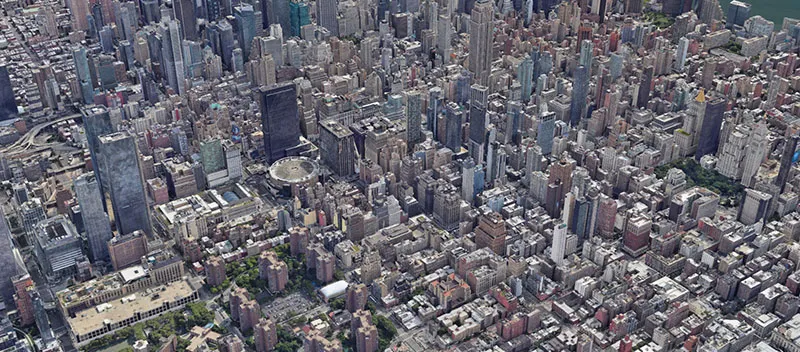Midtown Rezoning Triggers Wave of Mixed-Use Developments
Introduction
Recent rezoning initiatives in Midtown Manhattan have sparked a surge in mixed-use development, transforming the commercial and residential landscape of the district. City planners aim to address changing market demands, including rising office vacancies, housing shortages, and the need for vibrant, pedestrian-friendly urban environments. Developers are responding by converting office buildings, optimizing underutilized parcels, and constructing new mixed-use properties that blend residential, commercial, and retail elements.
Policy Drivers Behind Rezoning
Midtown rezoning policies are designed to encourage adaptive reuse, density flexibility, and diversified urban planning. Adjustments to zoning regulations allow developers to convert existing office spaces into residential units, incorporate retail at street level, and build multi-purpose structures that support office, hospitality, and residential functions. Incentives such as tax abatements, floor area bonuses, and expedited permitting make redevelopment projects financially viable, accelerating the pace of urban transformation.
Impact on Office and Residential Markets
Rezoning has a dual impact on office and residential markets. Converting underutilized office properties alleviates commercial vacancy pressures, while newly created residential units address housing demand in prime Midtown locations. Mixed-use developments promote round-the-clock activity, balancing daytime office populations with evening and weekend residential occupancy. This dynamic revitalizes neighborhoods, supports local businesses, and increases overall property values.
Developer Opportunities and Strategies
Developers are leveraging rezoning to create high-value, multi-functional properties that appeal to a wide range of tenants and buyers. Strategies include integrating luxury residential units with ground-floor retail, co-working spaces, and boutique amenities. Existing office buildings are often retrofitted with modern mechanical systems, energy-efficient upgrades, and technological enhancements to attract premium tenants. The flexibility provided by rezoning allows developers to tailor projects to current market conditions while anticipating future demand.
Economic and Market Implications
The mixed-use development wave has broader economic implications for Midtown. Construction and redevelopment generate employment across architecture, engineering, and construction sectors. Increased residential density and commercial activity stimulate local retail, dining, and service industries. Rising property values and occupancy rates enhance tax revenue, supporting public services and infrastructure projects. Midtown’s revitalization positions the district as a competitive hub for real estate investment and urban innovation.
Community and Urban Benefits
Mixed-use projects offer enhanced public spaces, improved pedestrian accessibility, and integrated amenities that benefit residents and the broader community. Parks, plazas, and retail areas create vibrant streetscapes, while residential inclusion fosters neighborhood diversity and continuity. By blending work, living, and leisure environments, rezoning supports a sustainable urban model that promotes livability and economic resilience.
Technological and Design Considerations
Modern mixed-use developments incorporate smart building technology, energy-efficient systems, and flexible floor plans. Developers are using advanced construction methods to optimize space, improve safety, and enhance comfort. Smart systems manage lighting, climate control, and security while providing data analytics for operational efficiency. Design innovations, such as modular units and adaptable layouts, allow properties to evolve with market demands over time.
Investment and Financing Dynamics
Rezoning and mixed-use development initiatives attract institutional investors and high-net-worth buyers, drawn by predictable rental income, diversified revenue streams, and long-term appreciation potential. Financial incentives and public-private partnerships reduce upfront costs, while enhanced urban appeal increases marketability. Investors benefit from a combination of stable residential demand, commercial leasing potential, and rising property valuations, creating attractive risk-adjusted returns.
Risks and Challenges
Despite opportunities, Midtown redevelopment faces challenges. Structural limitations in older office buildings can complicate conversions, while construction costs and permitting delays may impact project timelines. Market volatility, changes in demand for office versus residential space, and evolving regulatory requirements present additional risks. Developers must adopt robust risk management strategies, balancing financial, operational, and regulatory considerations to ensure successful project execution.
Future Outlook
The combination of rezoning and developer activity is likely to reshape Midtown Manhattan over the next decade. Continued mixed-use growth will address office vacancies, expand housing availability, and create more dynamic urban environments. Neighborhoods will benefit from increased pedestrian activity, commercial diversity, and modernized infrastructure. As Midtown adapts to evolving market and demographic trends, mixed-use projects are expected to remain a central feature of the district’s transformation.
Conclusion
Rezoning initiatives have catalyzed a wave of mixed-use development in Midtown Manhattan, reflecting the city’s ability to adapt to changing real estate markets and urban needs. By encouraging the conversion of office space into residential and multi-purpose properties, the city addresses both commercial vacancy and housing demand. Developers, investors, and communities all benefit from enhanced infrastructure, economic activity, and urban vibrancy. Midtown’s evolving skyline demonstrates a strategic balance between growth, innovation, and livability, positioning the district for sustained relevance in Manhattan’s real estate market.




